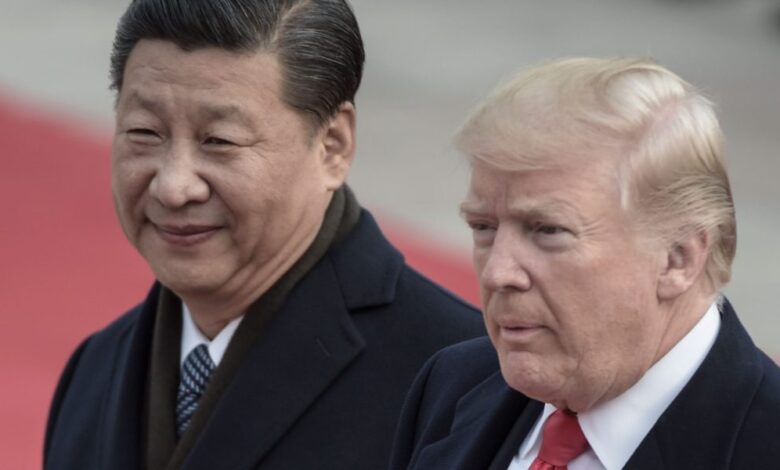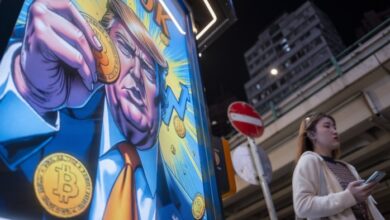UBS says Trump’s 60% tariffs would deal a major blow to China’s economy


Republican presidential candidate Donald Trump has said he could impose a 60% tax rate on imports from China if he returns to the White House, and a new analysis predicts this would significantly slow the world’s second-largest economy and push it to the brink of deflation.
Looking at the impact of Trump’s 2018 tariffs on China, economists from UBS have come up with a simplified model of the impact of the new round of tariffs, assuming that China does not retaliate, other countries do not impose corresponding tariffs on the United States, and some trade is diverted elsewhere.
They estimate that the 60% tariff would slow China’s GDP growth by 2.5 percentage points over the next 12 months, with about half of that coming from lower exports, and the rest from indirect impacts on consumption and investment.
Beijing’s stimulus policies to mitigate the impact of tariffs would reduce the economic drag to 1.5 percentage points, leading UBS to estimate that GDP growth in 2025 and 2026 could fall to around 3% if the increase is implemented by mid-2025. That’s lower than the bank’s baseline forecasts of 4.6% and 4.2%, respectively.
“Over time, more export capacity and production in other economies could help cushion the impact of higher US tariffs, but there is also the risk that other countries will also raise tariffs on imports from China,” UBS economists wrote in a note published on Monday. “Moreover, the lingering effects of weaker employment and capital expenditure will also weigh on the domestic economy.”
The note added that if China retaliated in kind, the economic impact would be more severe, while a lighter tariff would have a smaller impact.
But the mere threat of such tariff increases could still hurt the Chinese economy. Even if the tariff hikes are reduced or avoided, “some damage to the economy will be inevitable as U.S. manufacturers and importers move out of China to avoid risk and uncertainty,” UBS warned.
China’s economy is slowing amid a collapsing property market, weak domestic demand, huge local government debt and the Biden administration’s expansion of trade restrictions.
In the second quarter, GDP growth 4.7%down sharply from the previous quarter’s 5.3% pace and below the government’s 5% target. And a recent meeting of top policymakers There are few signs that Beijing is about to take bold steps to stimulate the economy.
Meanwhile, demand in China has been so weak that consumer inflation was just 0.2% year-on-year in June. At the same time, producer prices have fallen.
UBS said a 60% tariff would add to deflationary pressures by weakening demand and intensifying price competition. As a result, domestic producer prices would continue to fall into 2025 and core consumer inflation would hover around 0%.
That means overall consumer inflation is likely to remain around 0.5% over the next few years – up to 1 percentage point lower than the bank’s current baseline forecast.
Even before Trump’s election win raised the prospect of new tariffs, Views on China’s economy have turned gloomy..
“Years of erratic and irresponsible policies, Communist Party overreach and unfulfilled reform promises have created a stagnant Chinese economy with weak domestic demand and slowing growth,” said Anne Stevenson-Yang, co-founder of J Capital Research and author of Wild Ride: A Brief History of China’s Economic Opening and Closingwrote in a New York Times editorial in the May.




